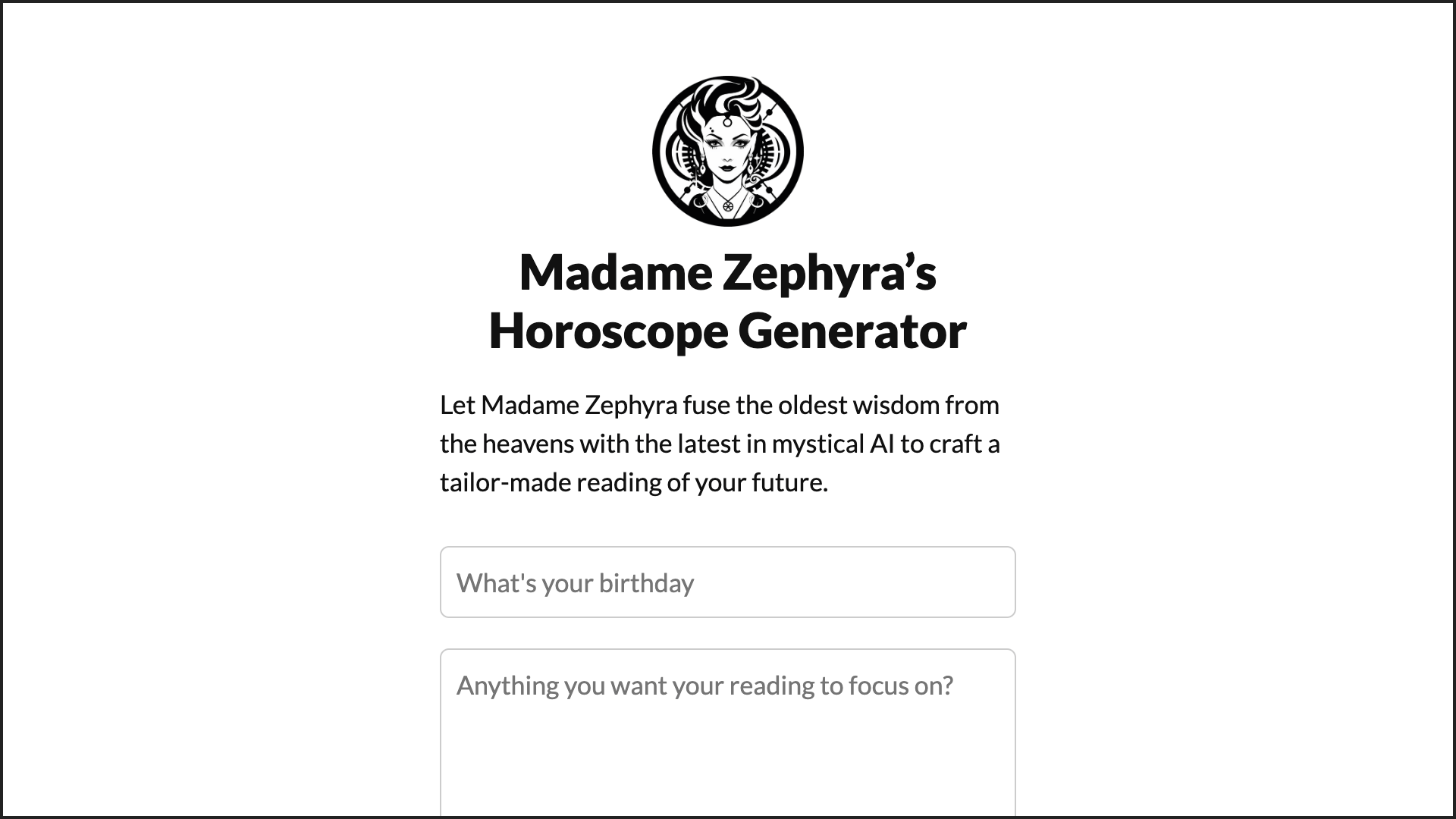Each week I’m learning by launching a new AI-enabled web application, product, or startup. This week we start with three straightforward single-page apps that utilize OpenAI prompts:
- CocktailGenius.com — Let me mix you a drink.
- NextBookClub.com — Let me suggest your next read.
- MadameZephyra.com — Let me tell you your future.
All three apps are powered by the GPT-4 language model. It offers a more creative response range than its predecessor, GPT-3, but needs a bit more time to generate its nuanced responses. So, you might want to make a cup of coffee after hitting the submit button.
These apps, though simple in design, have a few aspects I’d like to enhance: A more entertaining “loading” indicator to offer clarity while awaiting the OpenAI response—potentially adding streaming text display as the AI model generates the response. And some basic monetization with affiliate links to Amazon or Instacart in the created content.
I used NextBookClub.com to pick the perfect novel for an upcoming flight to Phoenix. And I have some more ambitious plans for CocktailGenius.com in the coming week.
Drawing parallels to the early days of the Apple iOS App store, I’ve coined the term “AI Flashlight Apps” for these preliminary experiments.
The App Store’s launch in 2008 opened new frontiers for developers around the world. Among the flurry of utility applications that graced the store, one app stands out in my memory – the “Flashlight” by John Haney Software. It was simple – turn your device’s screen into a source of light or use the LED flash on the back of your phone as a makeshift flashlight.
The popularity of that first Flashlight app demonstrated that even the simplest applications can go viral in a new environment.
And, while the first Flashlight app was a novel concept, the subsequent flood of duplicate apps diluted its innovative charm. So much so, that Apple eventually put a cap on them.
In these early days of AI, I’m trying to discern the difference between remarkable business ideas and a series of basic ChatGPT prompts. What are the simple and fun ideas that can catch fire and illustrate the potential for this new platform? And what (like the flashlight button on every iPhone today) is just a default feature that isn’t worthy of a standalone effort?
